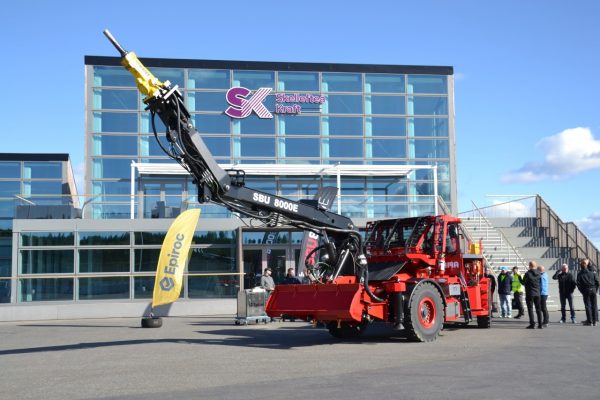Jama introduces world-first battery-powered scaler

“The future is here and the SBU 8000E is our first contribution and an important step on the road to fossil-free mining. It feels enormously inspiring from a technical, environmental, and industrial perspective,” Rickard Lindgren, CEO of Jama, said in a release.
The launch of the new battery powered SBU 8000E took place in September, with sales expected to start in 2021.
During production work it is common for mining machines to be powered by electricity via a cable, but progress has always been made with diesel engines. The new SBU 8000E features a completely rebuilt driveline. The diesel engine and associated components have been replaced by a powerful 160 kW electric motor with control units and is powered by a modular battery solution that is automatically charged with 100 kW charged power during scrapping, explained Lindgren.
The new SBU 8000E eliminate emissions and reduces the noise level, and at the same time it contributes to a better working environment in the mine and reduced costs for mine ventilation. In addition, it is developed for smoother service and maintenance.
New hydraulic valves also make the SBU 8000E even more reliable, together with an energy-efficient electric drive system. In addition, a new mobile control system developed for tough mining environments is included, with an intuitive user interface.
In collaboration with Epiroc with batteries from Northvolt
The battery that drives the SBU 8000E is state-of-the-art and manufactured by Northvolt, which is building one of the world’s largest battery factories in Skelleftea (in Sweden), nearby Jama’s production facility. The battery and driveline have been developed in collaboration with Epiroc and provide the same power as in the diesel-powered scaler. The solution is module-based and has been designed to provide a maximum utilization rate. Each individual part of the battery is monitored and checked separately. The battery is also the world’s first certified battery system specially developed for the mining industry’s extreme demands on safety and robustness. The system is certified for global markets (including CE, UL and CSA).
“We want our customers to concentrate on the work and be confident that they always have highly efficient batteries in the machine,” Lindgren added.
Unique battery subscription provides the best capacity
For SBU 8000E, Jama and Epiroc have also created a service solution for the vehicle’s batteries, whereby Epiroc offers a unique battery subscription that includes everything from certification to maintenance. The “Batteries as a Service” service means that customers subscribe to energy storage capacity, and when the batteries are worn out, they are replaced with newer versions with upgraded technology. The service also includes used batteries being collected and recycled at Northvolt, where raw materials are taken care of and turned into new batteries.
“Battery electrification is a paradigm shift, which creates challenges for the organizations that will implement this new technology. Like the shift from horse and carriage to cars, it requires new knowledge, new infrastructure, and new business models. Through “Batteries as a Service”, customers can focus on their core business and we take care of the battery,” added Erik Svedlund, marketing manager, electrification, at Epiroc.
Leading in ergonomics
The SBU 8000E has a cab that is built with the goal of exceeding all existing work environment standards. The floating cab provides minimal low-frequency vibrations and has documented low noise values. All ventilation air to the cab is filtered through a filter system and the machine is equipped with a heating system with air conditioning. The cab can be tilted backwards up to 13 degrees for a better overview and comfort during scrapping. The operator’s seat is air-suspended, has a three-point belt, double lumbar support and can be raised and lowered.
Sales start
The launch of the new battery powered SBU 8000E took place in September, with sales expected to start in 2021.
(This article first appeared in the Canadian Mining Journal)




